Are you tired of finding your Tesla’s battery drained after leaving it parked for extended periods? Fear not, as we have compiled a comprehensive guide to help you minimize “tesla battery draining while parked” issues and maximize your vehicle’s efficiency. Get ready to unlock valuable insights on managing your Tesla’s power consumption and preserving its battery life.
Key Takeaways
- Understand how Tesla Vampire Drain works and the factors that contribute to it.
- Utilize strategies such as monitoring energy consumption, adjusting settings, plugging in regularly and utilizing energy-saving features to minimize battery drain while parked.
- Use third party apps like Carly App or Teslamate for comprehensive tracking of your vehicle’s battery status when parking long term.
Understanding Tesla Vampire Drain
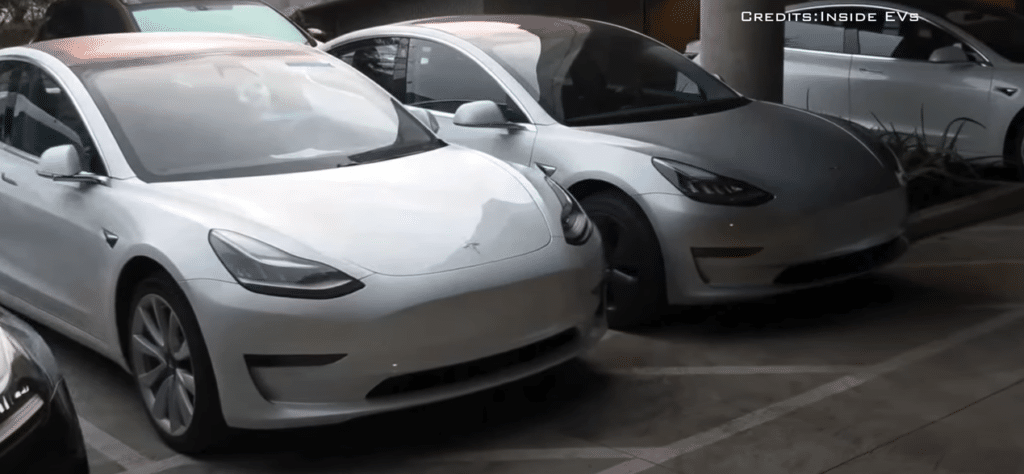
The term ‘vampire drain’ refers to the loss of battery power in your parked Tesla, which can leave your battery drained. This occurs due to the continuous power consumption of various systems such as the alarm, keyless entry, and infotainment system, which can result in a decrease in the car’s battery level.
The ambient temperature can also impact your battery’s performance, leading to a decline in its charge level. Monitoring these factors through the Tesla app can help in managing battery drain.
Battery drain factors
Sentry Mode is a significant factor contributing to Tesla’s battery drain. This security feature activates the car’s cameras and sensors to provide additional security, but it keeps the car awake and consumes more energy. Sentry Mode has been estimated to consume up to 500kWh per annum, resulting in a cost of $200/£200 or more depending on electricity rates.
To manage the battery drain caused by Sentry Mode, you can:
- Monitor the energy consumption through an energy app
- Adjust the settings to minimize the use of Sentry Mode when not needed
- Plug in the car more frequently to ensure a full charge
By implementing these strategies, you can effectively manage the battery drain caused by Sentry Mode while keeping your vehicle in standby mode.
Climate control settings also contribute to battery drain in Teslas. Adjusting these settings using the steering wheel controls or the infotainment system can help in managing battery drain. Some tips for managing climate control settings and reducing energy consumption include:
- Using the heat pump feature in Teslas
- Selecting energy-saving settings for temperature and fan speed
- Preconditioning the car while it is still plugged in to reduce the need for climate control once driving
By being mindful of climate control settings, you can help optimize battery usage in electric cars like your Tesla.
Phantom drain vs. vampire drain
Although phantom drain and vampire drain are often used interchangeably, they have subtle differences. Phantom drain is caused by energy dissipation while the vehicle is in an idle or off state, whereas vampire drain refers to the drain caused by the car’s computer systems monitoring battery health and other functions. Both phenomena can lead to a slow battery drain while your Tesla is not in use, with an estimated energy consumption of approximately 1% per day or 7.6 kWh per month.
Although these two terms refer to the same phenomenon, they represent different aspects of the problem. Understanding the differences and causes of phantom and vampire drain can help Tesla owners take appropriate steps to minimize battery drain and maximize their vehicle’s efficiency.
Tips to Minimize Tesla Battery Drain While Parked
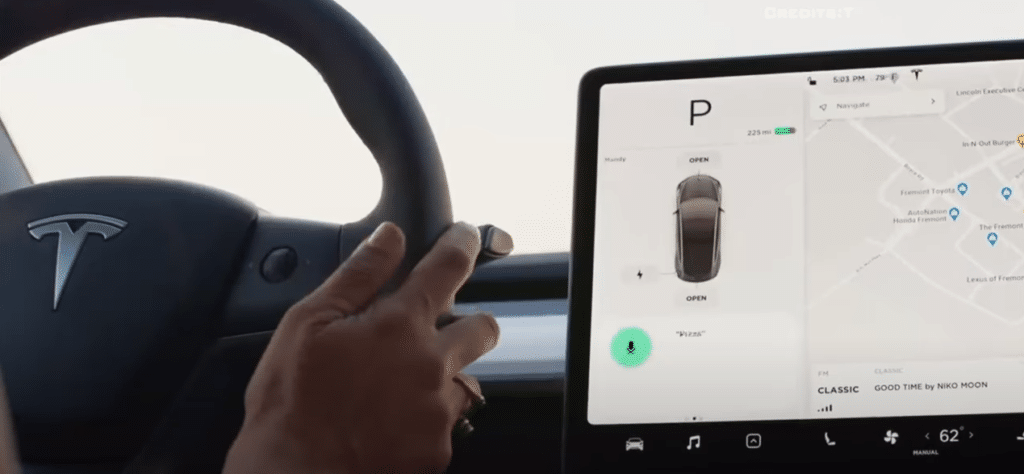
Minimizing Tesla battery drain requires careful management of certain features and settings while parked. Some key strategies involve managing Sentry Mode, adjusting climate control settings, and parking in optimal conditions to reduce the impact of temperature sensitivity on battery drain.
Implementing these strategies will help maintain your Tesla’s battery, even during extended parking periods.
Managing Sentry Mode
Proper management of Sentry Mode can aid in reducing your Tesla’s battery drain. Since Sentry Mode consumes approximately 300 watts of power, it is essential to turn it off when not in use to minimize battery drain. To deactivate Sentry Mode, you can go to the Security tab in your car’s menu and scroll down to find the option to turn off Sentry Mode permanently.
Monitor Sentry Mode’s power consumption and turn it off when not required to reduce battery drain and enhance your Tesla’s overall range significantly.
Adjusting Climate Control Settings
Modification of climate control settings can aid in minimizing your Tesla’s battery drain. Here are some tips to reduce battery drain:
- Avoid using Smart preconditioning, as it can increase energy consumption.
- Turn off Dog mode and Camping mode when not in use.
- Disable Cabin Overheat Protection and Scheduled Departure.
By following these tips, you can optimize battery usage and reduce the risk of running out of charge.
Optimizing your climate control settings can help maintain your Tesla’s battery in peak condition during parking.
Parking in Optimal Conditions
Parking your Tesla in cool, shaded areas can mitigate the battery temperature sensitivity’s impact on battery drain. The ideal temperature for a Tesla battery is between 60°F (15.6°C) and 80°F (26.7°C). Parking in optimal conditions can lessen the effects of extreme temperatures on your Tesla’s battery, ensuring it retains its charge during extended periods of inactivity.
The Role of Software Updates in Reducing Battery Drain
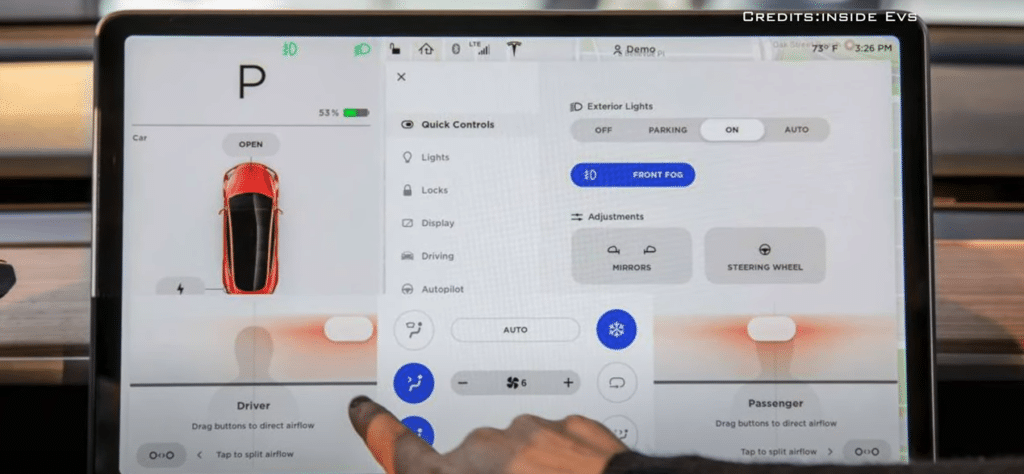
Regular updates of your Tesla’s software are vital for reducing battery drain as they can enhance battery efficiency and reduce power usage. However, the impact of software updates on battery drain can differ greatly. Some users have reported increased battery drain after certain updates, while others have not encountered any issues.
Nevertheless, Tesla owners should stay updated with software revisions and continuously monitor their battery performance.
Improving Battery Efficiency
Tesla software updates can boost battery efficiency and cut power usage, making it imperative to keep your car’s software updated. Recent software updates, including the 2022.40.1 update, have focused on optimizing charging efficiency, allowing for decreased charging time and increased energy efficiency when Supercharging.
Staying informed about software updates and their potential impact on battery efficiency helps keep your Tesla’s battery in optimal condition.
Troubleshooting After Software Updates
If your Tesla experiences issues post a software update, troubleshooting is essential to verify your vehicle’s sleep mode functionality. To do this, you can manually reboot the device by holding down the scroll wheels and connecting to a fast internet connection for faster updates.
Addressing any potential issues after a software update can help minimize battery drain and maintain your Tesla’s efficiency.
Third-Party Apps and Tesla Battery Drain
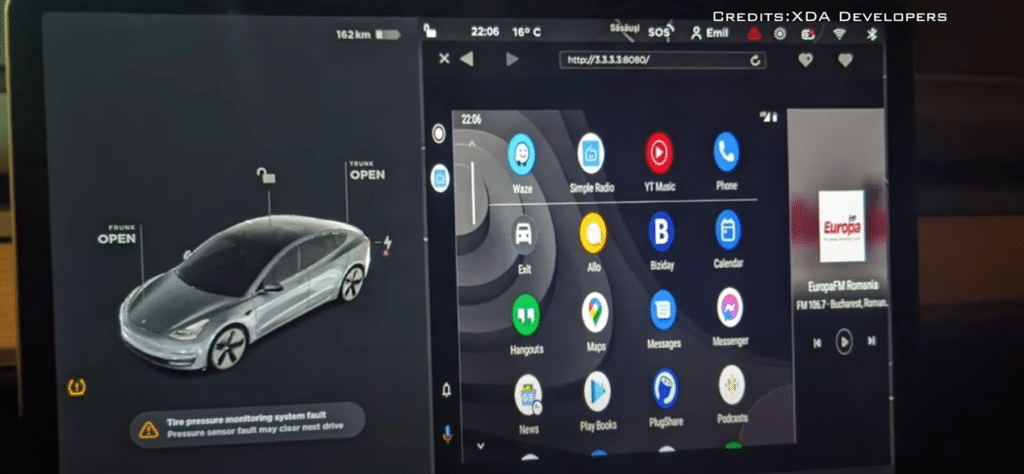
Third-party apps, which may access your Tesla’s API and wake up the car unnecessarily, can significantly impact the Tesla battery drain. Despite some apps offering useful features and monitoring capabilities, being aware of the potential risks associated with using third-party apps and choosing apps that effectively manage battery drain is essential.
Potential Risks of Third-Party Apps
Using third-party apps that access your Tesla’s API can result in unnecessary wake-ups and escalate battery drain. Additionally, the security protocols of Tesla, such as Multi-Factor Security and Pin to Drive, can be circumvented if tokens are available to a third party.
Reviewing all third-party access can help reduce vampire drain caused by third-party applications. Moreover, changing your Tesla password will invalidate all third-party applications and prevent them from accessing your car.
Recommended Apps for Monitoring Battery Status
While some third-party apps may contribute to battery drain, there are recommended apps for monitoring your Tesla’s battery status, such as the Carly App with its Vampire Drain Check function. This feature allows you to monitor the status of your car’s battery and detect any vampire drain occurring in your Tesla.
By using the Carly App or other recommended apps like TeslaFi and Teslamate, you can keep track of your Tesla’s battery performance and minimize potential vampire drain issues.
Long-Term Parking Strategies for Tesla Owners
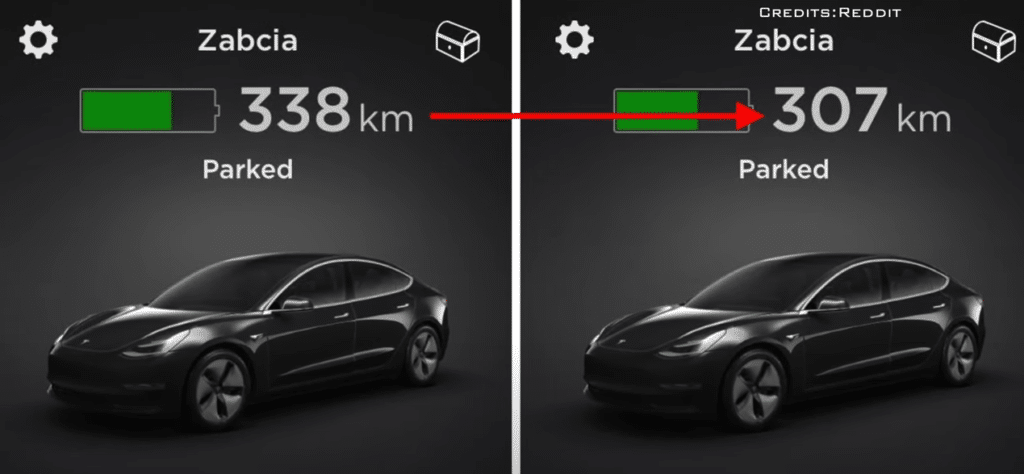
During long periods of parking your Tesla, implementing strategies to minimize battery drain is crucial. Some key considerations include:
- Preparing your Tesla for long-term parking
- Utilizing airport parking and valet services that offer charging options
- Monitoring battery status with the Carly App.
Following these strategies can help maintain your Tesla’s battery during extended periods of inactivity.
Preparing Your Tesla for Long-Term Parking
Before parking your Tesla Model for an extended period, make sure to charge the battery to around 50% for its long-term health. Additionally, disable features such as automatic temperature control, Dog Mode, Camping Mode, Summon Standby, Sentry Mode, and Cabin Overheat Protection to optimize battery life.
Taking these steps can help minimize battery drain and maintain your Tesla in top condition during long-term parking.
Airport Parking and Valet Services
Using airport parking and valet services that offer charging options for your Tesla can reduce battery drain during long-term parking. These services offer:
- Convenient and secure parking
- Access to Level 2 EV charging
- Activation of Tesla’s Valet Mode
- Covered parking options
Opting for airport parking and valet services with charging options ensures your Tesla’s battery stays charged and ready for your return.
Using the Carly App to monitor the battery status of your Tesla

The Carly App aids in monitoring the battery status of your parked Tesla by providing live statistics like battery power, voltage, current, and temperatures. Furthermore, the Carly Vampire Drain Check function enables you to observe the gradual decrease in battery level while your car is not in use, allowing you to detect any vampire drain occurring in your Tesla.
Using the Carly App keeps you informed about your Tesla’s battery performance and helps manage vampire drain during long-term parking.
Summary
In conclusion, minimizing battery drain in your Tesla involves understanding the causes of vampire drain, implementing practical strategies while parked, and utilizing recommended apps to monitor battery status. By following these guidelines, you can extend the life of your Tesla’s battery, maintain its efficiency, and ensure peak performance for years to come. Keep your Tesla charged and ready for the road ahead with these helpful tips and strategies.
Frequently Asked Questions
How do I find out what’s draining my car battery?
To find out what is draining your car battery, connect a digital multimeter to the negative battery terminal and then remove fuses one at a time, watching for changes in the multimeter reading. If the reading drops, you have found the culprit and can take steps to repair it. Alternatively, use an amp meter between the battery and the positive or negative cable to see if there is an actual drain on the battery when nothing else is running.
How long does it take to drain a Tesla battery?
Draining a Tesla battery can take anywhere from 1 to 80 hours, depending on the amount of charge in its kWh and the rate at which it is drained.
How do you save a Tesla battery when idle?
To save your Tesla’s battery when idle, disable Sentry Mode, Cabin Overheat Protection and Data Sharing; don’t use multiple Tesla tracking apps; install pending software updates; move devices outside of Bluetooth range; and keep your Tesla plugged in when not in use.
What is the difference between phantom drain and vampire drain?
Phantom drain is the energy loss that occurs when a car is in an idle or off state, while vampire drain is caused by the computer systems monitoring battery health and other functions.
How can I minimize battery drain in my Tesla while parked?
To minimize battery drain in your Tesla while parked, manage Sentry Mode, adjust climate control settings, park in optimal conditions, and keep the car’s software up to date.
